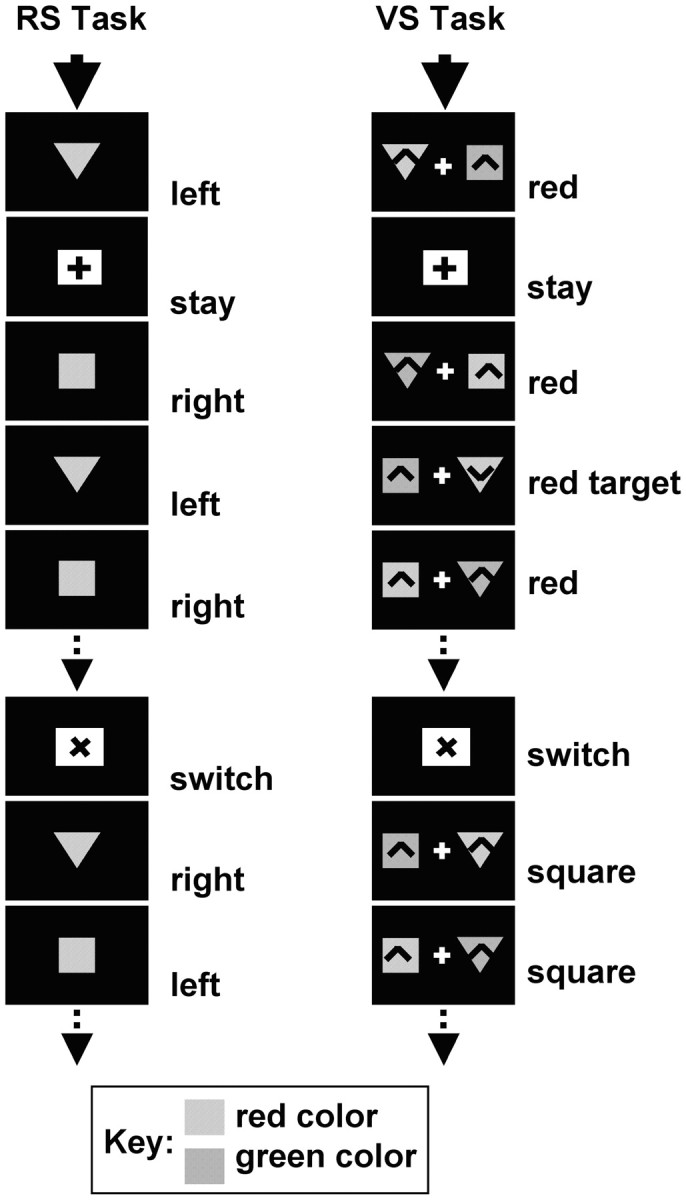Fig. 1.

Details of the RS task are shown in theleft-hand column. Subjects were presented with a series of task items. The items were always either squares ortriangles. Subjects alternated between two response selection rules either triangle–left-hand and square–right-hand or triangle–right-hand and square–left-hand. The figure shows an example in which the subject started with the first rule and later switches to the second rule. Every 9–11 trials, a white cue shape instructed subjects to either stay with the current selection rule set or to switch to using the other rule set. Stay or switch cues were differentiated by a + or x at their center. The meaning of the + and x was counterbalanced across subjects. In the example shown, the + and the x mean stay and switch, respectively. The right-hand column shows examples of stimuli used in the VS task. The task was formally similar to the RS task. On each trial subjects were presented with a pair of stimuli (items) either side of a central fixation point. One of the stimuli was always red, and the other was green. One of the stimuli was always asquare, and the other was a triangle. The subject attended to just one of the two stimuli according to a rule based on either color or shape. The design was fully counterbalanced so that some subjects alternated between attending to red or square stimuli, while others alternated between red or triangle, green or square, or green or triangle. For example, the subject might start (top panel) by attending to just the red stimulus item on every trial, regardless of its shape. Every 9–11 trials, a white cue shape instructed subjects to either stay with the current selection rule or to switch to using a selection rule based on the other stimulus dimension. For example, the subject might then attend to the square stimulus regardless of color (seventh panelfrom top). Again, stay or switch cues were differentiated by a + or x at their center. The meaning assignments of the + and x were counterbalanced across subjects as before. In the example shown, the + and the x mean stay and switch, respectively. The subject's task was to detect a rare target, V(fourth panel from top), and respond with a key press. The V only ever appeared in the attended stimulus and only on 20% of trials. On other trials only non-target Λ were presented, and no response was required. Both the target and non-target V and theΛ were only present for the final 15 msec of the total 70 msec of stimulus presentation.
